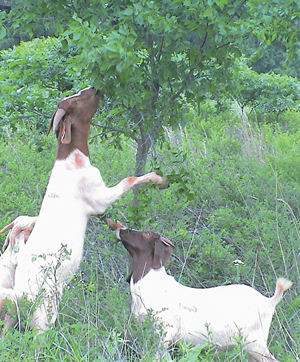
Farmers growing tagasaste, tree lucerne, can feed livestock for close to 30 years with this hardy, leafy and protein rich fodder shrub.
Besides being a nitrogen fixing tree, tagasaste has sweet scented flowers for bees.
It is a highly palatable fodder for goats, cows, sheep and other livestock including poultry. Its digestibility is between 77 per cent and 8 per cent.
Like Lucerne shrub, tagasaste is a better milk yield booster than most Napier grass varieties given that it has a crude protein content of between 20 per cent and 30 per cent.
Apart from the recently released giant variety from Kenya Agricultural and Livestock Research Organisation-which has 26 per cent proteins- other common types have proteins ranging from 7 per cent to 8.5 per cent.
The vitamin A in the tagasaste fodder helps in enhancing the yellow colour in the yolks of poultry.
This is a hardy fodder tree that can survive in semi arid areas, according to the Fodder Shrubs for Farmers in East Africa manual. The authors of the manual says the tree gives fodder for up to 30 years is well taken care of.
“Because of its deep roots of up to 30feet or more, tagasaste can tolerate long dry periods and can survive in areas with as little as 200mm annual rainfall, though it requires at least 600mm for good leaf production,” Charles Wambugu et.al say in the manual.
Arid areas receive rail of 250mm and below annually. The fodder therefore, will still survive in such areas.
READ ALSO:Shrub feeds can increase livestock nutrition by 60 per cent
READ ALSO:Fodder shrubs a cheaper alternative to commercial feeds
READ ALSO:Mulberry leaves offer livestock double Napier grass proteins
It is also tolerant frost of lows of up to -9 degrees Celsius.
Within the first two years, it should be pruned back to the ground to encourage sprouting of more shoots.
Regeneration can yield up to five tonnes per hectare in six months.
The fodder, however, has low sodium and marginal levels of phosphorus. Therefore, the animals require supplementation of minerals.
















Comments powered by CComment